Best Car Models
A car is an expensive purchase, so it's essential to research different features and packages before you make a decision. Whether you're shopping for your first car or you've done this before, use our guide to research the best car model for you. We explain how to choose features and a car style that is right for your
- Our recommendations are based on what reviewers say.
- 4,337,775 reviews on ConsumerAffairs are verified.
- We require contact information to ensure our reviewers are real.
- We use intelligent software that helps us maintain the integrity of reviews.
- Our moderators read all reviews to verify quality and helpfulness.
Compare Reviews for Top Car Models | ||||||
|---|---|---|---|---|---|---|
Ford’s F-250 and F-350 series of full-size trucks are considered super-duty trucks designed to tow and carry large payloads. They come in gas or diesel versions with 6.2-6.7 liter, V8 engines. |  | Chat with a ConsumerAffairs decision guide Live agent | ||||
In production from 1999-2015. Named after the XTERRA off-road triathlon race sponsored by Nissan, this compact SUV offered a two-box design in two trim levels. Discontinued in 2015. |  | Chat with a ConsumerAffairs decision guide Live agent | ||||
This name refers to multiple GM truck models including the full-size K5 Blazer (from 1969-1999), the compact midsize S-10 and the Tahoe, a full-size SUV. | 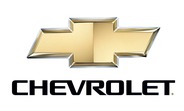 | Chat with a ConsumerAffairs decision guide Live agent | ||||
In production from 2002-2011, this compact crossover SUV offered front or all-wheel drive and was available in the US and Canada and was named “Dog Car of the Year” in 2007. It was discontinued in 2011. |  | Chat with a ConsumerAffairs decision guide Live agent | ||||
In production from 1994-2014. This midsize sedan was in production from 1994-2000 as a two-door coupe and was reintroduced in 2008 as a four-door sports car. | Chat with a ConsumerAffairs decision guide Live agent | |||||
This model is a discontinued marque of Toyota. In production from 2003-2016, the line was composed mostly of sports compact vehicles and targeted a youthful demographic. |  | Chat with a ConsumerAffairs decision guide Live agent | ||||
The Chevrolet Corvette was first produced in 1953 as a sports car and today is on its seventh generation which began in 2014. The current series comes in three models ranging in engine power from 460-650 hp. |  | Chat with a ConsumerAffairs decision guide Live agent | ||||
Originally in production from 1970-1988, the personal luxury car, a full-sized 2-door coupe, returned in 1995 and had a total of six generations before being discontinued again in 2007. | 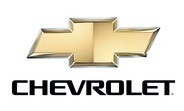 | Chat with a ConsumerAffairs decision guide Live agent | ||||
Now in its third generation, this 5-door subcompact hatchback is noted for its competitive cargo space and is offered in four models. |  | Chat with a ConsumerAffairs decision guide Live agent | ||||
The Sienna got its start in 1997 and continues to be a popular minivan model in the United States. The latest model gets up to 27 mpg on the highway and comes in five different models with varying features. |  | Chat with a ConsumerAffairs decision guide Live agent | ||||
What features matter most?
How fuel efficient are cars today?
As the cost of gasoline rises, fuel-efficient cars are becoming more prominent and sought-out. Many car manufacturers include hybrid versions of base models so you may see more electric cars on car lots that can save you thousands of dollars a year on gas.
- EcoBoost engines: EcoBoost engines are designed to provide the same torque and horsepower as a regular engine but get around 30 percent better fuel efficiency and 15 percent lower greenhouse emissions.
- Hybrids: Hybrid vehicles use a combination of fuel and electric power. During startup and low speeds (under 35-40 mph), the engine uses battery power and switches to fuel once the battery is depleted or the vehicle needs more power during higher speeds. Simultaneously, the gasoline powers an electric generator to recharge the battery.
- Electric cars: Electric cars run solely on battery power and must be recharged as the power gets low. Electric cars that are currently on the market can get the equivalent of 60 to over 100 miles per gallon.
What are some popular safety features in car models?
Safety features in new cars have greatly improved and not only include features that help protect passengers in the event of a crash, but features that help prevent accidents.
- Airbags: Airbags are not a new safety feature but they have improved in current car models. Many new vehicles come with front, side and curtain airbags that deploy upon impact.
- Forward-Collision Warning (FCW): One of the most innovative safety features on the market today is FCW. It uses laser, radar or cameras to monitor surrounding conditions and your current speed to alert you about potential impacts. This gives you ample time to react to and avoid a potential collision.
- Blind-spot monitoring: Blind-spot monitoring works by alerting you with side mirror lights and audible chimes when there’s a vehicle in your blind-spot.
- Rear cross-traffic alert: Rear cross-traffic alerts notify you when traffic or a jogger is approaching from the side as you back out.
What are some common technological features in car models?
Advances in technology take convenience to a new level for new car model owners. Things like heated seats and steering wheels, voice control, smartphone integration, Bluetooth and head-up displays are great features that come standard or in packages in many new models.
- Voice control: Voice control allows you to put your phone away and keep your eyes on the road. You can speak a radio station, GPS destination or contact to call and the car automatically performs the action.
- Smartphone integration: Many new car models include smartphone integration in their standard models. Features like Apple’s CarPlay and Android’s Auto bring your phone screen to life on the dashboard’s touchscreen.
- Head-up display: Head-up displays project information like miles per hour (mph), speed, navigation information and temperature on the windshield in front of you so you don’t have to divert your eyes to check operating information.
What are the different types of add-ons for car models?
Car models come with various trim levels, options and packages that can be a little confusing and sound redundant. Most of these are based around a base model and include various add-on options for an increased price.
- Trim levels: Trim levels denote the engine type, transmission type, the number of doors and standard features. For example, a particular car model might have a base model that starts with an L and goes up to XLE as more features are added and the price increases.
- Options: Options are add-ons like technology, safety and luxury features that don’t come standard on a model. Options include things like sunroofs, advanced entertainment/stereo systems and extra safety features.
- Packages: Packages are options that are bundled and priced together in groups like a “convenience package” or “technology package.” Buying a package is usually cheaper than buying individually priced options.
What are the most common types of cars?
Subcompact cars
Subcompact cars are smaller than a compact car but larger than a microcar. They are typically around 165-175 inches in length and can be have two or four doors. Examples of subcompact cars include the Ford Fiesta, MINI Cooper and Honda Fit.
Compact cars
Compact cars are slightly smaller than mid-size cars and have two or four doors. Compact cars have an interior volume of around 100-110 cubic feet. Examples of compact cars include the Mazda3, Chevrolet Cruze and Nissan Sentra.
Mid-size cars
Mid-size cars are equal to or bigger than compact cars and have an interior volume of 110-120 cubic feet. Many mid-size models come in a two- or four-door version, as well as a hatchback version. Examples of mid-size cars include the Toyota Camry, Ford Fusion and Chevrolet Malibu.
Full-size cars
Full-size cars are designed for comfort and luxury, with ample room for up to five passengers. The interior volume of a full-size car is greater than 120 cubic feet. Examples of full-size cars include the Chevrolet Impala, Nissan Maxima and Dodge Charger.
Trucks
Pickup trucks come in sizes ranging from mid-size to super-duty and are designed for carrying and towing large payloads.
SUVs
Sport utility vehicles (SUVs) are typically mid- to full-size, carrying five to eight passengers comfortably while having ample room for luggage or other cargo. SUVs come in different styles with various add-on packages to support multiple lifestyles. Interior entertainment systems are common in current models, as well as luggage and bike racks.
Who buys cars?
Individuals
It’s important for individuals to choose a vehicle that fits their lifestyle. Someone who commutes long distances may want a fuel-efficient car, while someone who owns land may find a full-size truck useful.
Families
Families with multiple kids benefit from having spacious vehicles like minivans or mid- to full-size SUVs. Many of these models come with built-in entertainment systems and can seat up to eight passengers.
People in the agricultural and industrial industries
People who work in agriculture, construction and similar outdoor jobs require vehicles such as trucks to carry and tow heavy payloads while crossing rugged terrain.
Companies needing fleet vehicles
Larger corporations sometimes keep an inventory of fleet vehicles that can be checked out by employees needing to travel for work. Fleet vehicles usually consist of a mix of large SUVs, fuel-efficient cars and trucks for field workers.
Thanks for subscribing.
You have successfully subscribed to our newsletter! Enjoy reading our tips and recommendations.
Compare Reviews for Top Car Models | ||||||
|---|---|---|---|---|---|---|
The Toyota Yaris is a subcompact, eco-friendly car that comes in a coupe, sedan and hatchback model. The 2017 model boasts 30-36 mpg on the highway, Bluetooth capability and smart-space interior configuration. |  | Chat with a ConsumerAffairs decision guide Live agent | ||||
The Mercedes SLK class of cars began production in 1996 as a compact luxury coupe vehicle. The 230 model, also called the Kompressor, has an I4 supercharged engine, reaching 0-60 mph in 6.9 seconds and a top speed of 148 mph. |  | Chat with a ConsumerAffairs decision guide Live agent | ||||
The Lincoln Navigator was introduced in 1998 in North America by the Ford Motor Company. The luxury SUV is now on its fourth generation and includes a 3.5 liter twin-turbocharged V6 engine and best-in-class towing capabilities. |  | Chat with a ConsumerAffairs decision guide Live agent | ||||
Sold from 1975 to 2011. This full-size sedan was a flagship of the Mercury line, a subsidiary of Ford Motor Company. The model has been discontinued. |  | Chat with a ConsumerAffairs decision guide Live agent | ||||
The Mercedes C class is a line of compact executive cars that were introduced in the early 90’s. The 230 offers drivers 17-23 mpg and includes a 2.5 liter V6 engine and a 16.4-gallon fuel tank. |  | Chat with a ConsumerAffairs decision guide Live agent | ||||
On the market from 1995-2006, this midsize car is now sold under the Dodge Avenger nameplate. 4-door sedan and 2-door coupe models were made. | Chat with a ConsumerAffairs decision guide Live agent | |||||
Launched in 2013, The MKC is a crossover model built on the Ford Global C platform. In 2016, Lincoln sold over 25,000 models of the compact luxury SUV in the United States. The MKC comes with either a 2.0 or 2.3 EcoBoost engine. |  | Chat with a ConsumerAffairs decision guide Live agent | ||||
This subcompact car offers a traverse front-engine and front-wheel drive. In 2012, the vehicle began being marketed as the Chevy Sonic. | 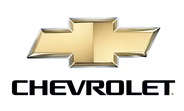 | Chat with a ConsumerAffairs decision guide Live agent | ||||
This compact 4-door SUV first came on the market in 2007 and shared a platform with the Jeep Liberty. Production stopped in 2012. | Chat with a ConsumerAffairs decision guide Live agent | |||||
The Suburban came into production in 1935 and is a full-size, extended-length SUV. Current Suburban models include a 5.3 liter, V8 engine that produces up to 355 hp, over 120 cubic feet of cargo space and up to 14 charge points. | 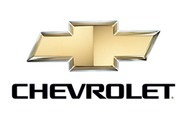 | Chat with a ConsumerAffairs decision guide Live agent | ||||
The Toyota Avalon is a fullsize car that began production in 1994. Today, the Avalon comes in eight models including a hybrid version. It has an interior built for comfort and a powerful V6, 268 hp engine. |  | Chat with a ConsumerAffairs decision guide Live agent | ||||
This mid-size pickup truck from Chrysler’s Ram Division was in production from 1986-2011. Also known as the Ram Dakota. | Chat with a ConsumerAffairs decision guide Live agent | |||||
The Honda Insight is a hybrid electric vehicle first produced in 1999. Through a series of redesigns, it is now a compact hybrid vehicle with a 101-volt nickel-metal battery that is capable of producing up to 44 mpg. | Chat with a ConsumerAffairs decision guide Live agent | |||||
The Nissan Versa is manufactured in two models: the Sedan and the Note. The Note accommodates up to five people and boasts 31-39 mpg. It has a 109-horsepower engine and can include multiple add-on features. |  | Chat with a ConsumerAffairs decision guide Live agent | ||||
Ford began production on the Taurus in 1985. Today, it is on its sixth generation of models as a full-size car. The 2017 model features 18/27 mpg, room for five people and various engine packages with differing power options. | 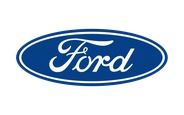 | Chat with a ConsumerAffairs decision guide Live agent | ||||
This model was given its own line in 1983 as a compact pickup truck and was discontinued in the US and Canada from 2011-2019. It continued to be produced internationally during this time. |  | Chat with a ConsumerAffairs decision guide Live agent | ||||
Chevy started production on the Volt in 2010, which is marketed as a plug-in hybrid car with lithium-ion batteries that vary in size based on the model. The Volt boasts up to 53 miles of electric range and around 50 mpg. | 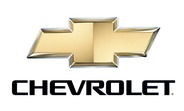 | Chat with a ConsumerAffairs decision guide Live agent | ||||
On the market from 1995-2010, this car was available as a convertible, sedan or coupe. The coupe was replaced in 1996 by the Chrysler LeBaron Coupe, and the rest of the models were replaced by the Chrysler 200 in 2011. | Chat with a ConsumerAffairs decision guide Live agent | |||||
For a really big SUV, this model is surprisingly fuel efficient at 20–26 mpg. Rated the best 3-row SUV in 2018 for families, this vehicle can comfortably seat 8 adults, plus there’s ample cargo space. Priced at $29,930–$52,600. | 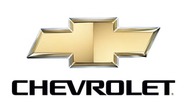 | Chat with a ConsumerAffairs decision guide Live agent | ||||
Ford first produced the Expedition in 1996. A full-size SUV, it seats up to 8 passengers, and offers multiple interior configurations to provide great cargo space. The fourth generation hits the market in 2018. |  | Chat with a ConsumerAffairs decision guide Live agent | ||||
In production from 2000-2010, this compact MPV offered front-wheel drive and 5 seats and was marketed as a small family car. It was available as a 2-door convertible and 5-door hatchback. The model was discontinued in 2010. | Chat with a ConsumerAffairs decision guide Live agent | |||||
Also known as the Mercury Monterey, this full-size minivan was in production from 2003 to 2006. In 2004, it was renamed the Ford Freestar. |  | Chat with a ConsumerAffairs decision guide Live agent | ||||
In production from 2007-2012. This five-door compact hatchback replaced the Neon and Chrysler PT Cruiser in 2007. | Chat with a ConsumerAffairs decision guide Live agent | |||||
Ford started production on the Mustang in 1964 and today is making its sixth generation of the sports car. The current model includes a 5.2 liter, V8 engine which produces 526 hp. The interior includes voice-activated technology. |  | Chat with a ConsumerAffairs decision guide Live agent | ||||
Debuting on the market in 1984, six generations of minivan have been released by Chrysler. AKA Dodge Caravan, Plymouth Voyager and Ram C/V, these minivans were the first in North America to have 9-speed automatic transmission. | Chat with a ConsumerAffairs decision guide Live agent | |||||
The Kia Sedona SUV sits 7 to 8, boasts a great safety score, features a high-end interior and has a V6 engine. The base Sedona L is one of the cheapest models in the minivan class. |  | Chat with a ConsumerAffairs decision guide Live agent | ||||
Nissan began production on the Quest in 2004 and continues to make the minivan in its fourth generation. Built with luxury and convenience in mind, the current models include features like automatic doors and a spacious interior. |  | Chat with a ConsumerAffairs decision guide Live agent | ||||
The Caravan is a minivan model by Dodge that hit the market in 1984. Today, the Caravan is on the fifth generation of models and includes seating for seven passengers, a 283 hp engine and up to 25 mpg on the highway. | Chat with a ConsumerAffairs decision guide Live agent | |||||
Third-row seating makes this 8-passenger midsize SUV a popular family vehicle. The largest SUV offered by Honda, later generations come with added safety features like side mirror cameras, collision and lane departure warning. |  | Chat with a ConsumerAffairs decision guide Live agent | ||||
The Highlander is Toyota’s crossover SUV that was introduced in 2000. Today, the Highlander is third generation and customers can choose from eight models, including a hybrid version. |  | Chat with a ConsumerAffairs decision guide Live agent | ||||
The GMC Yukon Denali is a luxury full-size SUV that includes three rows of seating designed for comfort. The Denali features leather seating, head-up display, a heated steering wheel and heated front seats. |  | Chat with a ConsumerAffairs decision guide Live agent | ||||
The Escalade is a full-size luxury SUV introduced in 1999. The 2017 model includes interior conveniences and comforts such as head-up display, climate-controlled seats, smartphone integration and power-folding third-row seats. | 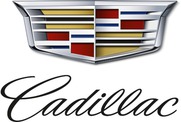 | Chat with a ConsumerAffairs decision guide Live agent | ||||
Available both as a hatchback and a four-door sedan, the compact Mazda 3 has fantastic handling, an upscale interior and an easy-to-use infotainment system. |  | Chat with a ConsumerAffairs decision guide Live agent | ||||
Originally called the Yukon, the Chevy Tahoe first hit the market in 1991 and was renamed Tahoe in 1995. The Tahoe is a large SUV seating up to eight people, has a 5.3 liter, 355 hp engine and multiple interior luxury features. | 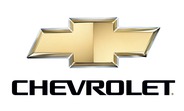 | Chat with a ConsumerAffairs decision guide Live agent | ||||
The Nissan Titan is a full-size pickup truck manufactured by Nissan for the North American market. The 2017 lineup features multiple power and luxury packages including built-in tool boxes and load-securing systems in the bed. |  | Chat with a ConsumerAffairs decision guide Live agent | ||||
Starting at $16,950 MSRP, all models of this sedan come with blind spot detection, rear cross-traffic alert, rearview camera, lane keep assistance and lane departure warning. These vehicles get up to 40 highway mpg. |  | Chat with a ConsumerAffairs decision guide Live agent | ||||
Ford began production on the Explorer in 1990 and continues to manufacture the popular full-size SUV in its fifth generation. The Explorer seats up to seven passengers and gets close to 24 mpg on the highway. |  | Chat with a ConsumerAffairs decision guide Live agent | ||||
Toyota Corolla is a model of subcompact and compact cars made in Japan and introduced in the United States in 1968. It has consistently been ranked top of its class and continues to be among the most popular consumer vehicles. |  | Chat with a ConsumerAffairs decision guide Live agent | ||||
First on the market in 1994, this compact executive car is also referred to as a sports sedan and a sports luxury vehicle. |  | Chat with a ConsumerAffairs decision guide Live agent | ||||
First landing on the market in 1974, American-made SUV has proven its staying power. Now offered as a crossover SUV, older versions of the vehicle were offered as a mid-size and later a compact SUV. |  | Chat with a ConsumerAffairs decision guide Live agent | ||||
Redesigned for 2019 with two new color options, this compact crossover has two rows, above-average fuel economy, plus the latest safety features and entertainment technology available. Starting at $23,800. 28–31 mpg. |  | Chat with a ConsumerAffairs decision guide Live agent | ||||
This compact car is offered as in 2-door coupe, 4-door sedan and 5-door hatchback variations. |  | Chat with a ConsumerAffairs decision guide Live agent | ||||
These compact SUVs start at $22,795 MSRP and get up to 32 highway mpg. There are 6 models to choose from. Higher-end models include smart safety features such as EyeSight driver assist technology and blind spot detection. |  | Chat with a ConsumerAffairs decision guide Live agent | ||||
The new model’s fresh front-end styling makes this old pony car look like a million bucks—starting at only $25,000, with extras and add-ons available. Expect to get about 22 mpg in town, 31 on the highway. | 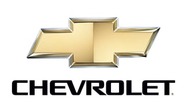 | Chat with a ConsumerAffairs decision guide Live agent | ||||
The first Charger was seen in 1964 as a show car. The 2017 model is a four-door sedan that comes in four packages. Known for its power, the Charger offers a 707 hp, supercharged V8 engine option and a family-friendly option. | Chat with a ConsumerAffairs decision guide Live agent | |||||
GMC’s Sierra (same as Chevy’s Silverado) was first produced in 1987 and today is a popular full-size, heavy-duty pickup truck. Customers can build their own vehicle using a base design and choosing from multiple features. |  | Chat with a ConsumerAffairs decision guide Live agent | ||||
Recognized for its open body style, this compact SUV offers removable hard or soft tops. A popular off-road vehicle since its 1986 debut, the brand has made moves in recent years to provide more on-road comfort. |  | Chat with a ConsumerAffairs decision guide Live agent | ||||
New models of this SUV start around $25,895 MSRP and get up to 32 highway mpg. There are 6 models for you to choose from. Base models do not include smart safety features such as blind spot detection. |  | Chat with a ConsumerAffairs decision guide Live agent | ||||
The Armada is Nissan's large SUV and was first introduced in 2003. It is currently on its second generation which comes in three versions, all with varying features. The Armada can seat up to eight passengers and gets 19 mpg. |  | Chat with a ConsumerAffairs decision guide Live agent | ||||
New base models of this sedan start at $22,050 MSRP and get up to 37 highway mpg. All 7 models include standard safety features like blind spot detection and rear cross-traffic alert. Base models get 36 highway MPG. |  | Chat with a ConsumerAffairs decision guide Live agent | ||||
The Odyssey is a five-door minivan made by Honda. It is currently on its fifth generation which includes six model packages with varying features. Technological features include rear entertainment systems and automatic doors. | Chat with a ConsumerAffairs decision guide Live agent | |||||
This five-seat compact South Korean-made SUV has a choice of two four-cylinder engines. Automatic emergency braking is available. The 2018 Kia Sportage has also been redesigned with a sportier look. |  | Chat with a ConsumerAffairs decision guide Live agent | ||||
There are 6 models of this SUV available as standard or hybrid models, starting at $24,800 MSRP. Base models get 33 highway mpg. Intelligent mobility features like the ProPILOT assist and automatic emergency braking keep you safe. |  | Chat with a ConsumerAffairs decision guide Live agent | ||||
Toyota began production on the RAV4 in 1994 and today is manufacturing the fourth generation which began in 2013. The RAV4 is a mid-size SUV and comes in eight model packages, including a hybrid and an adventure package. |  | Chat with a ConsumerAffairs decision guide Live agent | ||||
Sells multiple brands of motorhomes, toy haulers, fifth wheels, travel trailers, destination trailers and campaign trailers. Pricing from $10,000 to $350,000. Free online payment estimator and RV finder map. |  | Chat with a ConsumerAffairs decision guide Live agent | ||||
Dodge began production on the Journey in 2008 and continues to produce the mid-size crossover SUV. The current model comes in five packages that include various features like ample cargo space and advanced technological features. | Chat with a ConsumerAffairs decision guide Live agent | |||||
This mid-size 4-door sedan first debuted on the market in 2001, launching its fourth generation in 2016. The fourth generation introduced a plug-in hybrid and convertible variations. |  | Chat with a ConsumerAffairs decision guide Live agent | ||||
Offers 22 brands and 140 models of motorhomes, conventional trailers, lightweight trailers, destination trailers, toy haulers and fifth wheels. View floor plans and visit nationwide dealers. Request quote for pricing. |  | Chat with a ConsumerAffairs decision guide Live agent | ||||
Toyota first started production on the 4Runner in 1984 based on their pickup truck. Today, the 4Runner is on its fifth generation and it is ranked as one of the top 10 longest-lasting vehicles on the market in the United States. |  | Chat with a ConsumerAffairs decision guide Live agent | ||||
Dodge began production on the full-size Ram truck in 1981 which has since been named Truck of the Year five times. The 2017 Ram model comes in multiple trim, cab and engine options, designed for multiple uses. | Chat with a ConsumerAffairs decision guide Live agent | |||||
New models of this crossover start at $16,200 MSRP. Safety features include autonomous emergency braking and blind spot detection. Base models get around 30 highway mpg. |  | Chat with a ConsumerAffairs decision guide Live agent | ||||
The Escape got its start in 2000 and is in its third generation. The current model boasts up to 29 mph on the highway and can seat five passengers. Customers can choose from three engines, including a turbo charger option. |  | Chat with a ConsumerAffairs decision guide Live agent | ||||
The Camry got its start in 1982 as a compact car. Today, it's considered mid-sized and features seven packages in the current model, including a hybrid version. The Camry adopted a sporty interior and has a 3.5 liter, V6 engine. |  | Chat with a ConsumerAffairs decision guide Live agent | ||||
The Nissan Leaf was introduced in 2010 and is designed to be affordable and eco-friendly, boasting over 100 mpg. It is a compact car with a 360 V Lithium-ion battery that can run the car for 107 miles. |  | Chat with a ConsumerAffairs decision guide Live agent | ||||
Chevrolet began production on the Cruze in 2008. The current model of this compact car boasts 40 mpg on the highway and a turbo engine that comes standard. The interior can be configured for optimal storage and cargo space. | 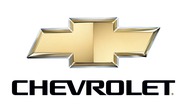 | Chat with a ConsumerAffairs decision guide Live agent | ||||
In production since 2001, this 5-door mid-size crossover SUV offers front-wheel and four-wheel drive, as well as automatic and manual transmission options and regularly ranks high on safety and reliability reports. |  | Chat with a ConsumerAffairs decision guide Live agent | ||||
The CR-V got its start in 1995 and is Honda's version of a compact crossover SUV. The current CR-V model comes in four packages and includes advanced technology like driver-assisted intelligence and over 50 technology features. | Chat with a ConsumerAffairs decision guide Live agent | |||||
Honda introduced the Accord in 1976 as a four-door sedan. Today, the Accord is considered a full-size sedan and comes in five models featuring different specifications. Consumers can custom-build their own car off of base models. |  | Chat with a ConsumerAffairs decision guide Live agent | ||||
Nissan began producing the Pathfinder in 1985 as a mid-size crossover SUV and continues to produce new models in its fourth generation. Current models come in five packages with varying features but all include a 284 hp engine. |  | Chat with a ConsumerAffairs decision guide Live agent | ||||
The Chevy Silverado is the same base model as the GMC Sierra and includes a V8, 6.2 liter, 420-horsepower engine for its top model. It is made with high-strength steel and offers 12,500 pounds of towing capacity. |  | Chat with a ConsumerAffairs decision guide Live agent | ||||
Nissan introduced the Altima in 1992 as a midsize sedan and continues to produce the car in its fifth generation. The current generation consists of eight models with differing add-on features and engine sizes. |  | Chat with a ConsumerAffairs decision guide Live agent | ||||
This 5-door mid-size crossover SUV, was originally developed to be a successor to the smaller “Cherokee.” Noted for a more luxurious feel, the model offers a sleek body style and is one of the most-awarded SUVs on the market. |  | Chat with a ConsumerAffairs decision guide Live agent | ||||
The Honda Civic was introduced as a subcompact, two-door car in 1972. Today, it comes in a coupe, hatchback and sedan model, all boasting up to 40 mpg fuel efficiency on the highway. |  | Chat with a ConsumerAffairs decision guide Live agent | ||||
The Nissan Sentra was introduced in 1982 as a subcompact car. Current Sentra models boast excellent gas mileage, getting up to 37 mpg on the highway. Each model comes with a 124-130 hp engine and seats up to five passengers. |  | Chat with a ConsumerAffairs decision guide Live agent | ||||
The Ford F-Series is currently on its thirteenth generation, dating back to 1948. Current F-150 models include a 3.5 liter, EcoBoost engine with a towing capacity of 12,200 pounds. Also included is a 10-speed transmission. |  | Chat with a ConsumerAffairs decision guide Live agent | ||||
The GMC Acadia was introduced in 2007 as a mid-size crossover SUV and continues to be a popular model today. In its second generation, the current models of Acadia come in seven packages that include different features. |  | Chat with a ConsumerAffairs decision guide Live agent | ||||
The Passat was built in 1973 as a large family car and today is classified as a mid-size vehicle. It boasts a 1.7 liter, 170-horsepower, fuel-efficient engine and smartphone touchscreen capabilities. |  | Chat with a ConsumerAffairs decision guide Live agent | ||||
The Chrysler Pacifica was originally the name for Chrysler's luxury minivan introduced in 1999, later switching to the name of their crossover vehicle in 2004 and today is the replacement for their Town and Country minivan. | Chat with a ConsumerAffairs decision guide Live agent | |||||
The Jetta was first produced in 1979 as a compact family car. The latest Jetta model is considered a compact performance sedan and include technological features like smartphone integration and touchscreen displays. |  | Chat with a ConsumerAffairs decision guide Live agent | ||||
Nissan introduced the Murano in 2002 as a mid-size crossover SUV. Today, the Murano is on its third generation and is produced in three models, each with varying features. All models seat up to five people and get 28 mpg. |  | Chat with a ConsumerAffairs decision guide Live agent | ||||
The Dodge Challenger is produced by Chrysler Dodge and was first introduced in 1958. Today, it is on its fourth generation of models, which was introduced in 2008 to rival the fifth generation Ford Mustang and Chevrolet Camaro. | Chat with a ConsumerAffairs decision guide Live agent | |||||
The Ford Focus was introduced in 1998 and continues today in its fourth generation. Considered a sedan, the Focus comes in three four-door models and a hatchback model. All models boast great gas mileage, getting up to 38 mpg. |  | Chat with a ConsumerAffairs decision guide Live agent | ||||
The Tundra entered production ins 1999 and continues to be a top-selling, full-size pickup truck in the United States. The 2017 model includes a 6,400-10,500 towing capacity and 310-381 hp. |  | Chat with a ConsumerAffairs decision guide Live agent | ||||
Nissan began production on the Frontier in 1997 as a midsize truck. The current model features a cargo-carrying system for the bed, rear-door access, underseat storage and a flip-up rear bench. |  | Chat with a ConsumerAffairs decision guide Live agent | ||||
Chrysler began producing the 300 in 2004. It is a full-size luxury sedan that comes in four models that vary in style and power. Chrysler 300s have a luxurious interior and boast up to 30 mpg on the highway. | Chat with a ConsumerAffairs decision guide Live agent | |||||
Available in standard and hybrid models, the latest model of this stylish sedan features an array of smart features, like a lane-keeping system, cross-traffic alert and adaptive cruise control. New models start around $20,000. |  | Chat with a ConsumerAffairs decision guide Live agent | ||||
Dodge started production on the Dart in 1960 as a compact car. Today, the redesigned Dart is a technologically advanced compact car, boasting up to 40 mpg and up to 184 hp. | Chat with a ConsumerAffairs decision guide Live agent | |||||
Toyota started production on the Prius in 1997 as a hybrid electric car. Today, it comes in either a four-door sedan or a five-door hatchback and is considered the most fuel-efficient, non-plugin car in the United States. |  | Chat with a ConsumerAffairs decision guide Live agent | ||||
Toyota began production on the Tacoma in 1995 and today is producing the third generation of the mid-size truck. Customers can choose from six packages for the Tacoma, including an off-road version. |  | Chat with a ConsumerAffairs decision guide Live agent | ||||
The Chevy Malibu is a mid-size, four-door car in its eighth generation of production. Current model design focuses on safety and efficiency, with 36 mpg on the highway and up to 11 safety features available. | 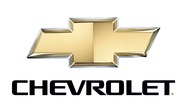 | Chat with a ConsumerAffairs decision guide Live agent | ||||
The Maxima was introduced in 1981 as a full size car. Today, Nissan continues to produce the Maxima in its eighth generation. Current models come in six packages with varying interior and exterior features. |  | Chat with a ConsumerAffairs decision guide Live agent | ||||
The GMC Canyon was introduced in 2004, replacing the Chevrolet S-10 as GMC’s compact pickup truck. Today, the Canyon offers 181 horsepower, a trailer brake controller and a maximum towing capacity of 7,700 pounds. |  | Chat with a ConsumerAffairs decision guide Live agent | ||||
The Durango began as a mid-size SUV from 1997-2003 then switched to a full-size SUV where it remains today. It can seat up to five passengers and has two engine packages ranging from a V6 to a V8. | Chat with a ConsumerAffairs decision guide Live agent | |||||
Manufacturing trucks since 1919, this car maker’s modern models include the compact Colorado pickup (2004-2012), the full-sized light duty Silverado (1998-present) and Silverado HD (1998-2014). | 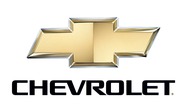 | Chat with a ConsumerAffairs decision guide Live agent | ||||
The Impala is a full-size car made by Chevrolet that began production in 1957. Today, Chevy is making the tenth generation of Impalas which boast an excellent safety system, smartphone integration and Wi-Fi. | 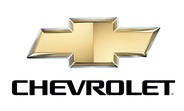 | Chat with a ConsumerAffairs decision guide Live agent | ||||
Volkswagen started production on the Beetle in 1936 and this model continues to thrive today. Known for its rear-engine design, this economy car has adopted a sporty look and engine design and boasts up to 33 mpg on the highway. |  | Chat with a ConsumerAffairs decision guide Live agent | ||||
In production from 2004-2010. Available as a coupe or sedan, this car was also offered in a high performance model, labeled the SS. | 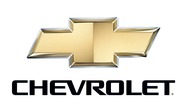 | Chat with a ConsumerAffairs decision guide Live agent | ||||
The Land Cruiser got its start in 1951 and is Toyota’s longest running series. The Land Cruiser is popular with off-road enthusiasts and comes in multiple models with varying off-road packages. |  | Chat with a ConsumerAffairs decision guide Live agent | ||||
Information in this guide is general in nature and is intended for informational purposes only; it is not legal, health, investment or tax advice. ConsumerAffairs.com makes no representation as to the accuracy of the information provided and assumes no liability for any damages or loss arising from its use.
Want your company to be on this guide?
Yes, continueYou’re signed up
We’ll start sending you the news you need delivered straight to you. We value your privacy. Unsubscribe easily.